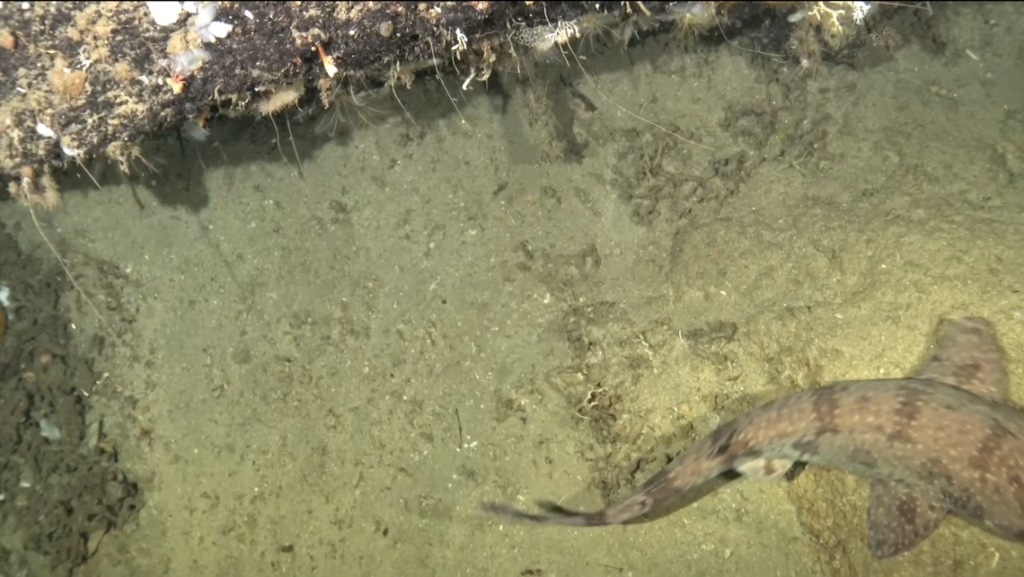Rare Deep Sea Shark Filmed for the First Time Ever!

Scientists have captured the first-ever footage of a rare and mysterious deep-sea shark known as the painted swellshark—and it’s causing waves of excitement in the marine science world.This elusive shark species isn’t new to scientists, but until now, they’d only seen it in a very unusual place: fish markets in Indonesia, specifically in Lombok and Bali. No one had ever seen it alive in the wild—until a recent deep-sea survey off the coast of Timor-Leste changed everything.

Not Your Typical Shark
Unlike the big, fearsome sharks made famous in movies, this one is a catshark—a smaller, lesser-known cousin. What makes the deep-sea painted swellshark special is not its size, but its unique ability to inflate its body when threatened, making it look much larger than it really is. This bizarre defense mechanism is what gives “swellsharks” their name.But beyond that fascinating trick, almost nothing was known about this deep-sea creature—until now.
Caught on Camera: A Deep-Sea First
Using low-cost deep-sea cameras, researchers conducting a survey of Timor-Leste’s ocean floor managed to capture this rare shark on video for the very first time.The cameras, capable of recording 4K high-resolution video at depths of up to 6,000 meters, were dropped into the sea and recorded the painted swell swimming around—more than half a kilometer underwater, at depths of 536 and 570 meters.The shark appeared multiple times in the footage. In one video, a female can be seen interacting with the bait and making several passes in front of the camera, giving scientists a precious glimpse into its behavior in the wild.

A Major Scientific Discovery
This footage not only proves that the painted swell is out there in the wild, but it also expands its known habitat range by a whopping 1,100 kilometers. That’s a major leap in what scientists know about where this rare species lives.A scientific paper was published shortly after the discovery, highlighting the importance of this find. The researchers emphasized how important affordable and innovative technology is in exploring the deep sea and protecting species we barely know exist.
“The discovery of the painted swell off Timor-Leste highlights the importance of modern, cost-effective technologies to survey the deep sea and locate these lost sharks before they vanish,” the scientists wrote.
What We Still Don’t Know
Marine biologist Louw Claassens shared her excitement about the discovery. Speaking to Mongabay, she explained that even though scientists have known about this species from fish market specimens, they’ve had “very little ecological information.”
“Here, we could observe this species in the wild… we can now say it does occur to depths of up to 570 meters,” she added.
The footage also helps researchers begin to understand the shark’s behavior, movement, and environment—things that were impossible to study when the only evidence of the came from dead specimens on fishmongers’ tables.

The Power of Low-Cost Tech
What’s perhaps even more exciting is how this discovery was made: using affordable, deep-sea camera systems developed by the National Geographic Society’s Exploration Technology Lab.Normally, exploring the deep ocean is extremely expensive and complex, requiring specialized submersibles and ships. But these budget-friendly camera rigs are proving to be a game-changer, offering an accessible way to learn more about the hidden world at the bottom of our oceans.
A Viral Moment for Shark Lovers
The footage of the it was shared on Instagram by a shark expert, quickly gaining attention and admiration from ocean enthusiasts and scientists alike. For many, it was a reminder of how much of our planet remains unexplored—and how many creatures are still out there, waiting to be discovered.
In Summary: Why This Matters
- A rare painted swellshark has been filmed in the wild for the first time.
- The footage came from low-cost deep-sea cameras during a survey near Timor-Leste.
- The shark was found at depths over 500 meters, expanding its known range by 1,100 km.
- The discovery highlights the power of affordable tech in ocean research.
- Scientists now have new clues to study the shark’s behavior and protect its habitat.






